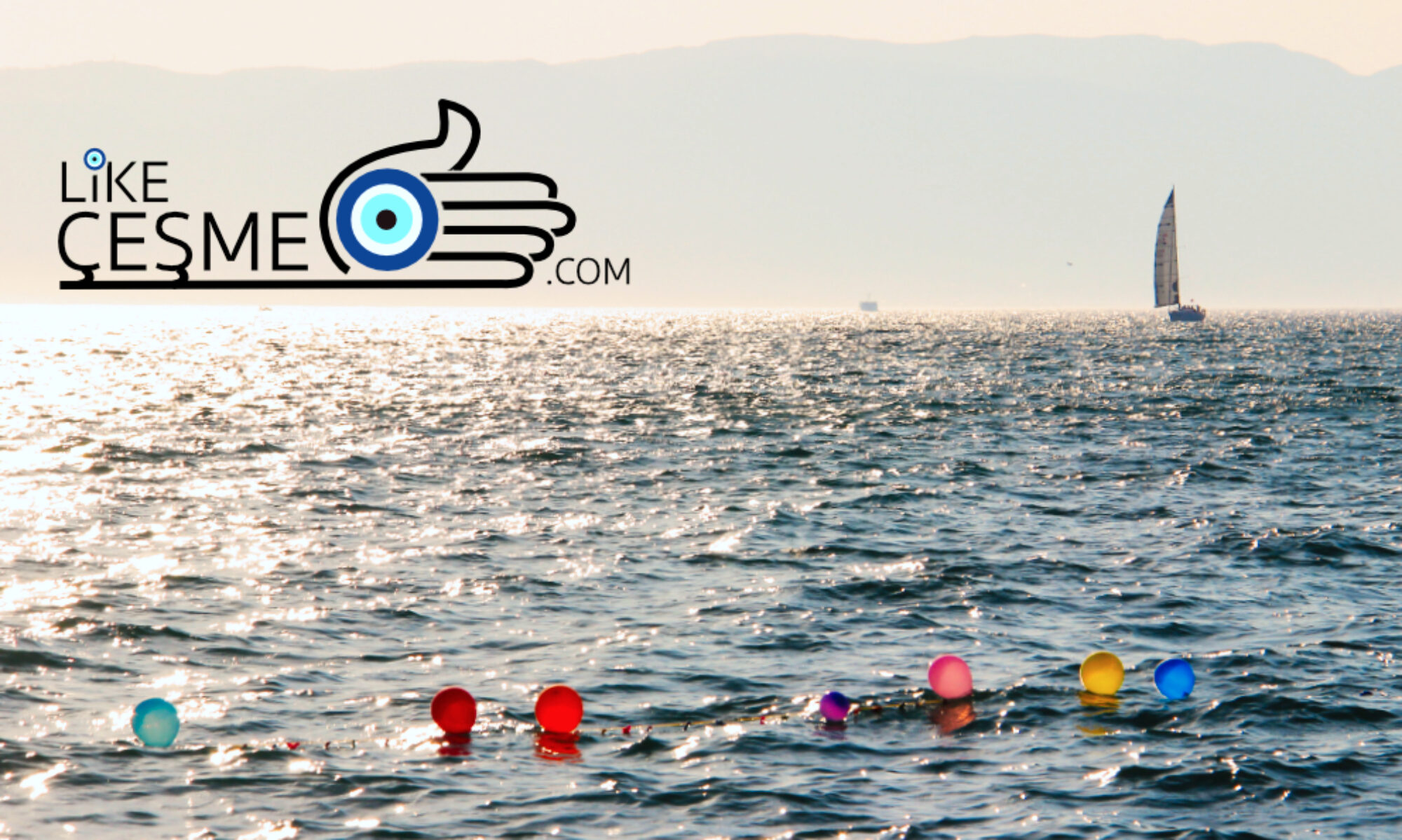See also Izmir Attractions and Izmir Museums.
İzmir is rich in historical and archaeological sites that reflect its diverse and ancient heritage; below are some ideas and fascinating cultural activities in Izmir worth experiencing:
İzmir Archaeological Sites – Table of Contents
Smyrna (İzmir) Agora
Smyrna Agorası – Namazgah, Tarik Sari Sokağı No:29, 35240 Konak/İzmir –Open daily 08:30-19:00. Official Smyrna Agora Archaeological Site English Website. Entry ticket €6 (As of July 2024).
See also likecesme.com – The Seven Churches of Revelation, The Church of Smyrna.
The İzmir Agora, also known as the Agora of Smyrna, is a historical marketplace in İzmir and is one of the best-preserved agoras of the ancient world and provides valuable insights into the social, political, and economic life of ancient Smyrna.
The Agora of Smyrna dates back to the Hellenistic period, around the 4th century B.C. and was a bustling marketplace and a focal point of public life in the city. The agora was rebuilt and expanded during the Roman period, particularly after an earthquake in 178 A.D. during the reign of Emperor Marcus Aurelius. The Roman influence is evident in the architecture and layout of the site. It underwent various modifications during the Byzantine and Ottoman periods. However, its significance declined over time as new centres of commerce and administration developed.
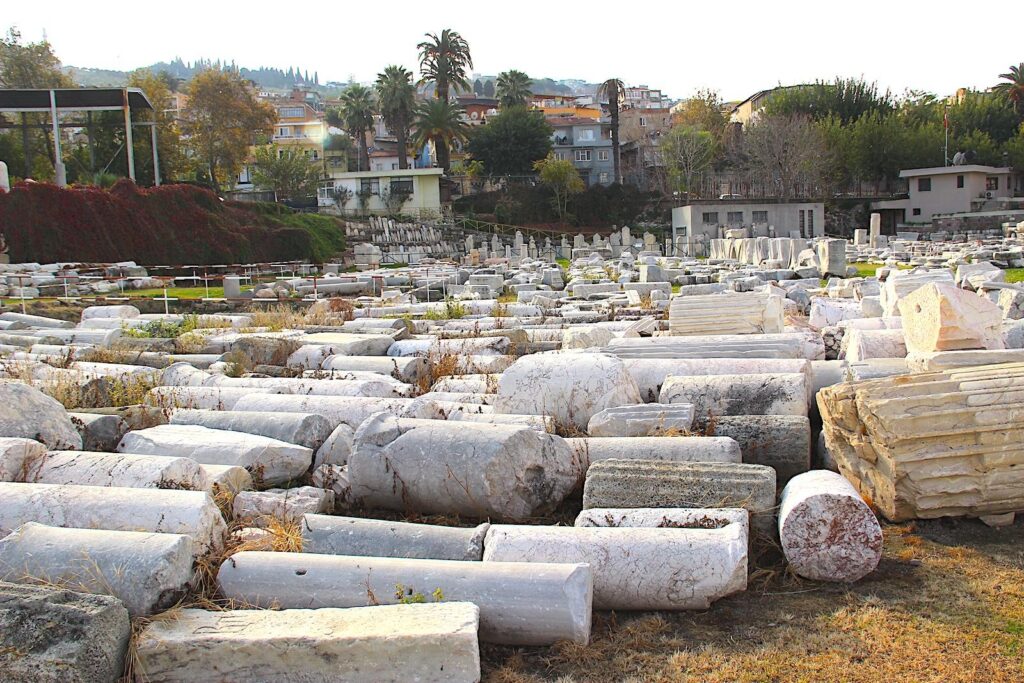
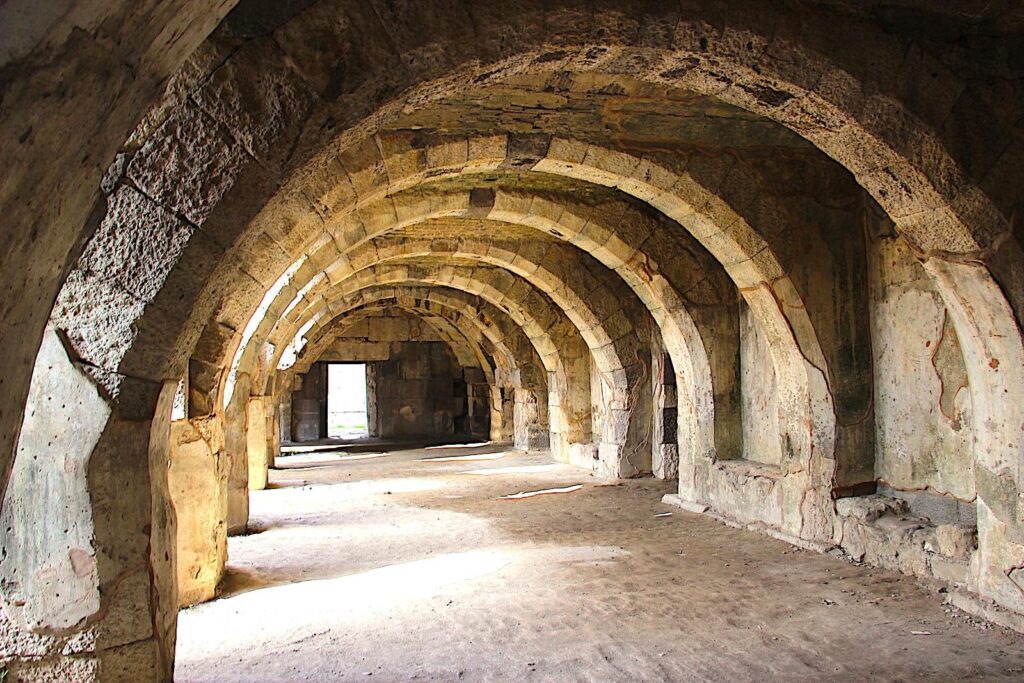
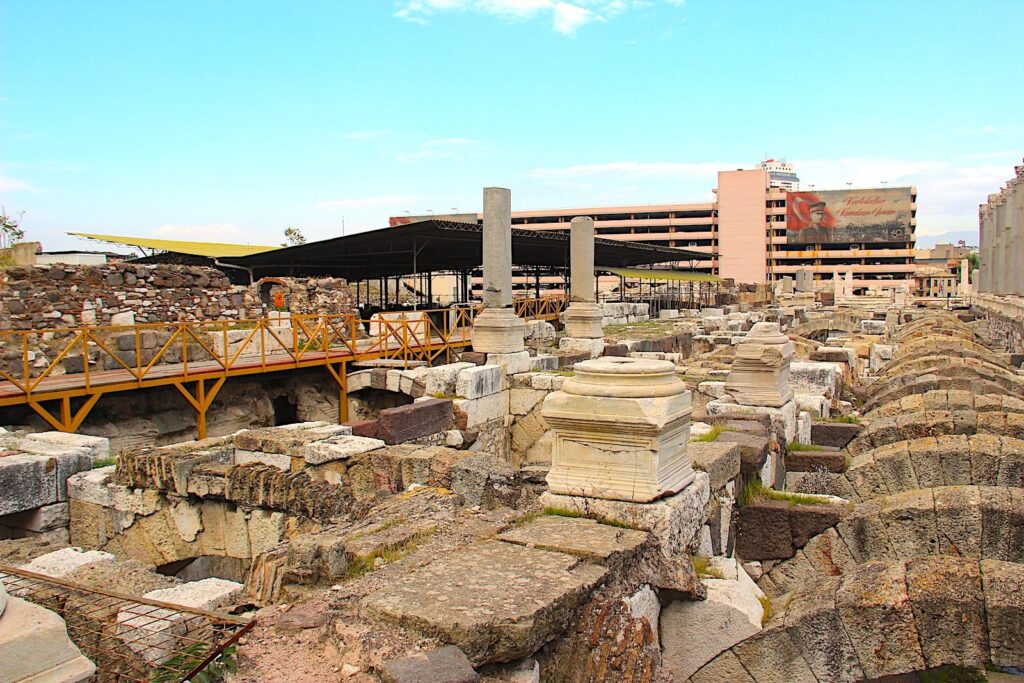
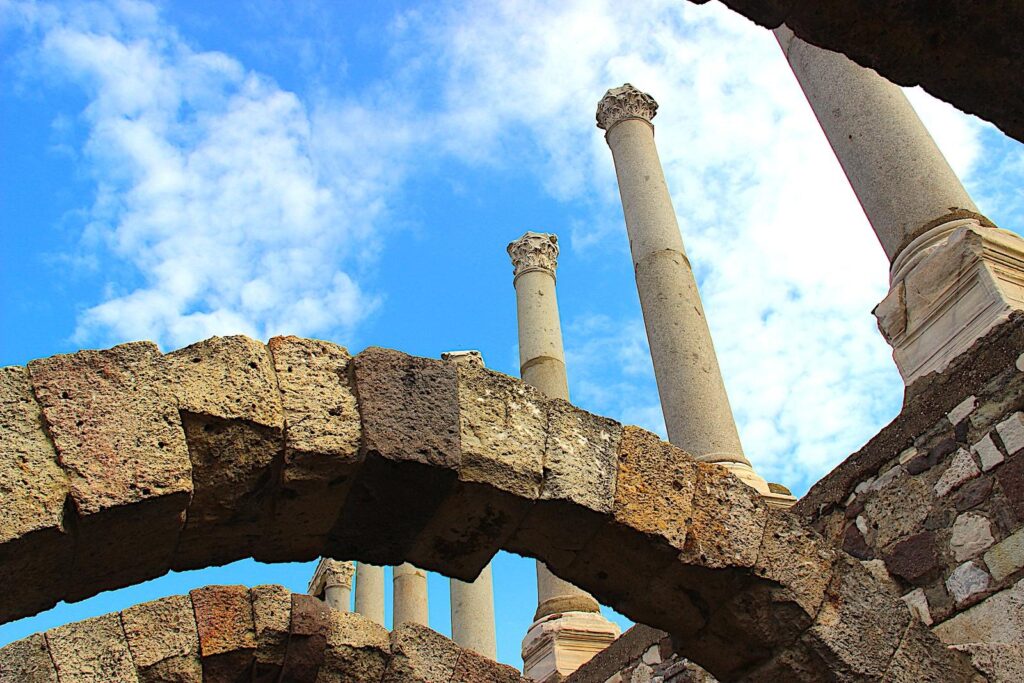
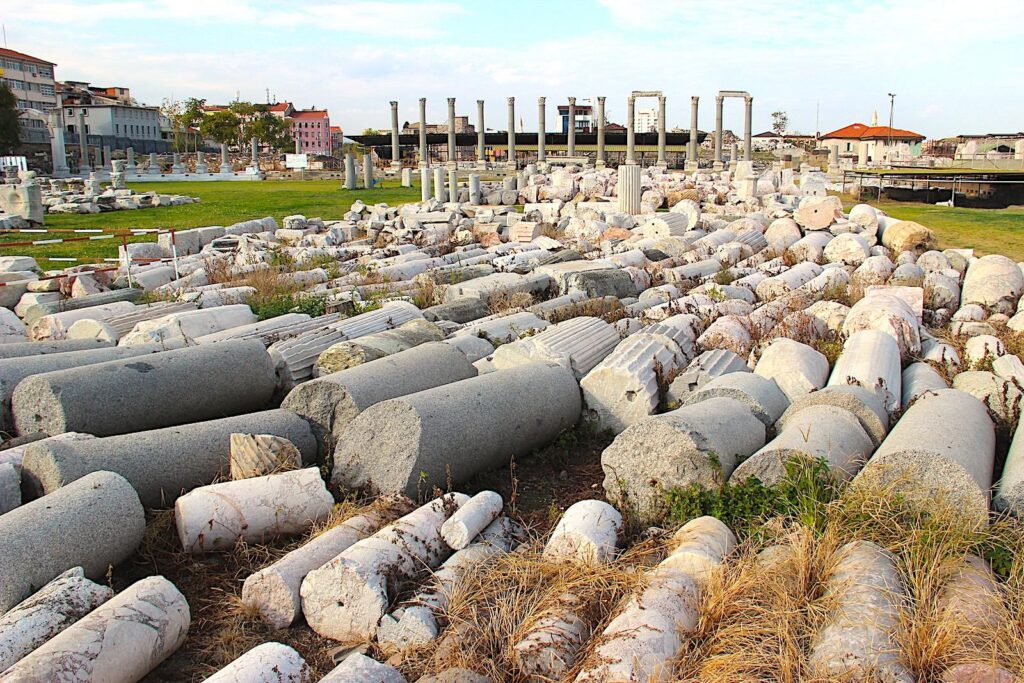
The Agora of Smyrna is rectangular, covering an area of approximately 120 by 80 metres. It is surrounded by colonnaded porticoes (stoas) on all four sides, which would have provided shelter for merchants and shoppers. The basilica, located on the western side of the agora, was a multi-functional building used for various administrative, commercial, and judicial activities. It is one of the most significant and best-preserved structures in the agora. The agora features numerous Corinthian columns and arches, which would have supported the porticoes and created a grand and orderly appearance. Many of these columns and arches have been reconstructed.
The site contains several statues and inscriptions, offering insights into ancient Smyrna’s public life and notable figures. An advanced water system, including a cistern and aqueducts, provided water to the agora and the surrounding area. The remains of this system are still visible today.
The İzmir Agora is remarkably well-preserved compared to other ancient agoras. Ongoing archaeological excavations and conservation efforts have helped to maintain and restore the site. A museum and visitor centre have been established on-site to provide information and context for visitors. Artefacts discovered during excavations are displayed in the museum, helping to illustrate the history and significance of the agora.
Kadifekale Fortress
Kadifekale, 5271. Sk. 9-11, 35270 Konak/İzmir – Open daily 08:30-18:30.
Kadifekale, also known as the Velvet Castle, has a rich and varied history that reflects the diverse cultures and civilizations that have occupied İzmir over the centuries. The castle is strategically located on a hill overlooking the city and the Gulf of Izmir, offering panoramic views that served as a key defensive site throughout its history.
The origins of Kadifekale date back to ancient times, with the first fortifications on the hill built by the Ionian Greeks. However, the most significant early construction occurred during the reign of Alexander the Great in the 4th century B.C. According to legend, the oracle at Claros Sanctuary, Alexander the Great, had prompted him to rebuild Smyrna on the slopes of Mount Pagos, where Kadifekale is located. The fortifications were expanded and strengthened during the Hellenistic and Roman periods, serving as a crucial defensive structure for the city, and it continued to be of strategic importance during the Byzantine era.
When the Ottomans conquered İzmir in the 15th century, they further fortified the castle, and it served not only as a military stronghold but also as a residence and administrative centre for Ottoman officials. In the following centuries, the castle’s military significance declined, and it gradually fell into disrepair. Today, Kadifekale is a historical monument and a popular tourist attraction, offering a glimpse into Izmir’s past and stunning city views.
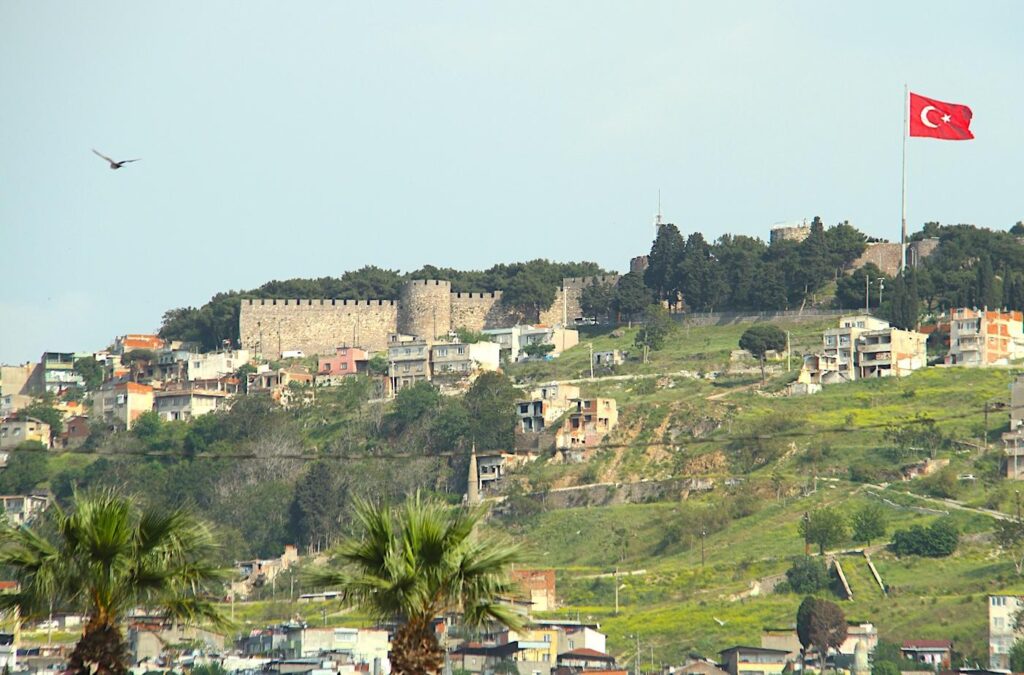
The castle’s walls are made of large stone blocks, with sections dating back to different historical periods. The fortifications include several towers and bastions that provided vantage points for surveillance and defence. The main entrance to Kadifekale is through a large gate, which would have been heavily fortified and guarded. The gate leads into the inner areas of the castle. Inside the walls is an open courtyard that would have been used for various purposes, including as a gathering place for soldiers and residents. The courtyard offers expansive views of Izmir and the surrounding landscape. Kadifekale contains several cisterns that were used to collect and store rainwater. These cisterns were essential for ensuring a reliable water supply during sieges and periods of isolation.
While many of the castle’s original structures have been damaged or destroyed over the centuries, remnants of various buildings, including residential quarters and administrative offices, can still be seen. Archaeological excavations have uncovered artefacts that provide insight into the daily life of the castle’s inhabitants.
Bayraklı Tumulus (Höyüğü)
Smyrna Bayraklı Höyüğü – Tepekule, 35580 Bayraklı/İzmir – Open Mon-Fri 08:00-18:00.
Smyrna Bayraklı Höyüğü, also known as the Bayraklı Tumulus or Bayraklı Mound, is an important archaeological site located in the Bayraklı district of İzmir. It represents the earliest settlement of ancient Smyrna and provides significant insights into the region’s prehistoric and early historic periods.
The origins of the Bayraklı Höyüğü date back to the Neolithic period, around the 3rd millennium B.C. and the site shows evidence of continuous habitation from this early period. During the Bronze Age, the settlement grew in size and complexity with the development of fortified structures and advanced urban planning. The settlement peaked during the Early Iron Age (circa 1000-700 B.C.) when it became one of the major centres in the Aegean region. During this time, Smyrna was believed to have been founded by the Aeolians. In the 7th century BC, Smyrna was re-founded as a Greek city, and the Bayraklı Höyüğü continued to be an important part of the urban landscape. The city was later moved to its current location, closer to the coastline, during the Hellenistic period.
The site experienced several periods of destruction and rebuilding, likely due to natural disasters such as earthquakes and human conflicts. By the Hellenistic period, the settlement at Bayraklı was largely abandoned in favour of the new city of Smyrna.
The Bayraklı Höyüğü is characterized by its impressive fortification walls, which were built using large stone blocks. These walls protected against invaders and are among the region’s earliest examples of such defensive structures. Excavations have revealed various residential structures, including houses with multiple rooms, courtyards, and storage facilities. These buildings were constructed using mudbrick and stone foundations. The site also includes evidence of public buildings, such as temples and administrative structures. The discovery of a temple dedicated to Athena indicates the site’s religious significance.
Systematic archaeological excavations at Bayraklı Höyüğü began in the mid-20th century and have continued intermittently. These excavations have uncovered significant artefacts and architectural remains, shedding light on the early history of Smyrna. The site faces various preservation challenges, including urban encroachment, environmental factors, and the need for ongoing conservation efforts. Parts of the site are in a densely populated urban area, complicating preservation efforts. The site is also fenced off to prevent unauthorized access and damage. While access to the site is somewhat restricted due to ongoing excavations and conservation work, there are initiatives to make the site more accessible to the public through guided tours and educational programs.
Yeşilova Höyük Visitor Centre
Yeşilova Höyüğü Ziyaretçi Merkezi – Karacaoğlan, 35100 Bornova/İzmir. Tel.: +90 (232) 311 1674. Open Mon-Fri 08:30-17:00, Sat 09:00-13:00. Yeşilova Höyüğü English Website.
The Yeşilova Höyük Visitor Centre is a significant archaeological and educational site located east of İzmir Centre in the district of Bornova. It serves as the gateway to understanding the Yeşilova Höyük, excavated as recently as 2005; it is one of the oldest known settlements in the region, with origins dating back to the Neolithic period, around 8,500 years ago. The cultural history of İzmir has had to be re-defined in the light of the discoveries of Yeşilova Höyük, becoming plausible to advance that the ancient culture of the city had been shaped by residents who had lived some 8,000-9,000 years ago rather than by those who inhabited the Bayraklı Höyük as of the 3rd millennium B.C.
The centre features a variety of exhibits showcasing artefacts uncovered during excavations, including tools, pottery, and other everyday items that provide insights into the daily lives of the ancient inhabitants. The visitor centre offers educational programs for schools and the public. Interactive displays and multimedia presentations help visitors engage with the history and significance of Yeşilova Höyük, including touchscreens, 3D models, and virtual reality experiences that bring the ancient settlement to life. The centre is also a hub for ongoing archaeological research and conservation efforts. It provides facilities for researchers and conservators working to preserve the site and its artefacts. The centre includes amenities like a gift shop, café, and rest areas.
